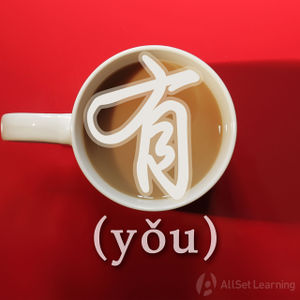Difference between revisions of "Expressing "in addition" with "haiyou""
m (→Examples) |
m (Text replacement - "péngyǒu" to "péngyou") |
||
| Line 20: | Line 20: | ||
*你 跟 他 一起 去 吧。<em>还有</em>,别 忘 了 带 这 些 材料。<span class="pinyin">Nǐ gēn tā yīqǐ qù ba. <em>Hái yǒu</em>, bié wàng le dài zhèxiē cáiliào.</span><span class="trans">Please go with him. Also, don't forget to bring these materials.</span> | *你 跟 他 一起 去 吧。<em>还有</em>,别 忘 了 带 这 些 材料。<span class="pinyin">Nǐ gēn tā yīqǐ qù ba. <em>Hái yǒu</em>, bié wàng le dài zhèxiē cáiliào.</span><span class="trans">Please go with him. Also, don't forget to bring these materials.</span> | ||
*我 今天 要 考试。<em>还有</em> ,我 必须 要 写 完 中文 作文。<span class="pinyin">Wǒ jīntiān yào kǎoshì. <em>Hái yǒu</em>, wǒ bìxū yào xiě wán Zhōngwén zuòwén.</span><span class="trans">I’m going to have an exam today. Plus, I must finish writing my Chinese essay.</span> | *我 今天 要 考试。<em>还有</em> ,我 必须 要 写 完 中文 作文。<span class="pinyin">Wǒ jīntiān yào kǎoshì. <em>Hái yǒu</em>, wǒ bìxū yào xiě wán Zhōngwén zuòwén.</span><span class="trans">I’m going to have an exam today. Plus, I must finish writing my Chinese essay.</span> | ||
| − | *今天 特别 倒霉,他的 女朋友 离开 了 他,<em>还有</em> 他 的 老板 要 解雇 他。<span class="pinyin">Jīntiān tèbié dǎoméi, tā de nǚ | + | *今天 特别 倒霉,他的 女朋友 离开 了 他,<em>还有</em> 他 的 老板 要 解雇 他。<span class="pinyin">Jīntiān tèbié dǎoméi, tā de nǚ péngyou líkāi le tā, <em>hái yǒu</em> tā de lǎobǎn yào jiěgù tā.</span><span class="trans">Today he's really unlucky. His girlfriend left him, and on top of that, his boss is going to fire him.</span> |
</div> | </div> | ||
Revision as of 08:49, 11 August 2015
-
Level
-
Similar to
- Expressing "and" with "he" (A1)
- Expressing "and also" with "hai" (A2)
- Expressing "except" and "in addition" with "chule… yiwai" (B1)
- Expressing "in addition" with "lingwai" (B1)
- Expressing "in addition" with "zaishuo" (B1)
- Expressing "not only... but also" with "budan... erqie..." (B1)
- Using "budan... geng" to express "not only... but also" (B2)
- Expressing "as well as" with "yiji" (C1)
-
Used for
-
Keywords
"还有" (háiyǒu) is used to express "in addition..." or "and also..." in a conversation. It is introducing new information to the topic the speaker is talking about, as an afterthought. While it's not the most challenging grammar structure, an important thing to keep in mind is that 还有 normally starts a completely new sentence or clause.
Structure
It's as simple as using 还有 before the new clause or sentence. 还有 can also be used with a comma, similar to how we can say "in addition, . . ." in English.
[Clause ],+ 还有 ,+ [Clause 2]
Examples
- 你 需要 吃 点 药。还有,要 多 休息 。You need to take some medicine. Also, you should get more rest.
- 你 跟 他 一起 去 吧。还有,别 忘 了 带 这 些 材料。Please go with him. Also, don't forget to bring these materials.
- 我 今天 要 考试。还有 ,我 必须 要 写 完 中文 作文。I’m going to have an exam today. Plus, I must finish writing my Chinese essay.
- 今天 特别 倒霉,他的 女朋友 离开 了 他,还有 他 的 老板 要 解雇 他。Today he's really unlucky. His girlfriend left him, and on top of that, his boss is going to fire him.
See also
Sources and further reading
Books



